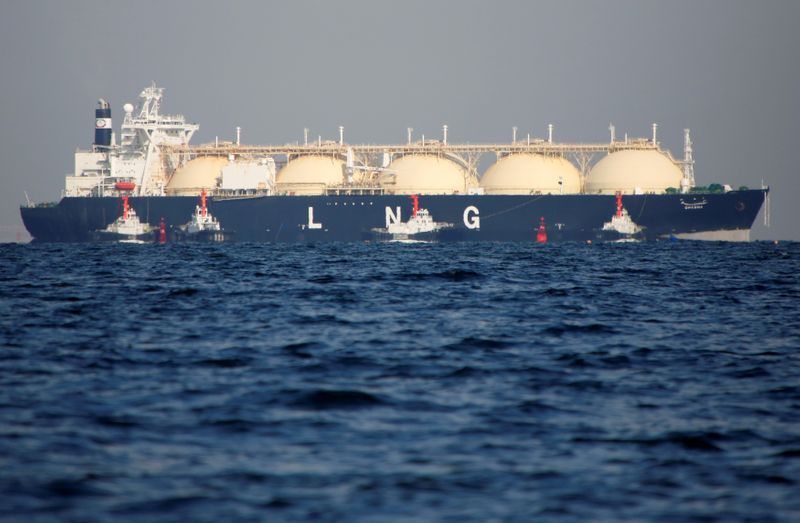(ATF) All the pieces have fallen in place to send liquefied natural gas (LNG) spot prices in Asia – home to around two-thirds of global demand for the fuel – to their highest levels ever.
On Tuesday, JKM, the fuel’s benchmark for North Asia, breached the $30 per million British thermal unit (MMBtu) price point, rising to $32.494, the highest level since the benchmark was established in 2009. The same day trading house Trafigura reportedly bought an LNG cargo from Total SE for $39.30/MMBtu.
These higher price points would have been hard to imagine just eight months ago when prices for the fuel dropped to historic lows under $2/MMBtu amid demand destruction from economic contraction from the Covid-19 pandemic. At the time, producers of the fuel were offloading cargoes at a loss, causing other producers, including the US to forgo trading uncontracted volumes altogether on the spot market.
The difference between earlier this year and now comes from a number of factors. First, until just two months ago legacy LNG importers Japan, China, and South Korea were sitting on ample inventories of the fuel that they thought would see them through another mild winter similar to the previous two. If they needed to buy cargoes to fill in supply gaps, the thinking went, there would be both ample and cheap supplies on the spot market.
But, since then, record cold temperatures have slammed north Asia, particularly Japan and China, the world’s top two LNG importers respectively. Cold weather has hit Japan so hard they are asking residential users to pull back on consumption, while also pivoting to more coal to make up the gas shortfall. There are now fears of blackouts over much of the country as power prices also reach record highs.
Intra-day prices on the Japan Electric Power Exchange hit a record high of 246.8 yen per kilowatt-hour Tuesday afternoon in the spot market, compared with an average of only 7.6 yen per kW/h last January and 15.1 yen per kW/h in December 2020.
China: Coldest since 1966
China, for its part, is seeing its coldest temperatures since 1966, according to media reports in the country, which has sent city governments and city gas distributors scrambling for answers, including reallocating gas away from industry to residential end-users. At least nine provincial grid systems in northern China saw peak power load hitting historic highs last week, according to China’s State Grid.
However, if colder temperatures weren’t enough to drive up LNG spot prices, there have also been numerous production delays and export facilities as well as delays for LNG vessels crossing the Panama Canal en-route to gas thirsty Asian markets. In response, tankers have been forced to take longer routes to Asia, which increases transport time and significantly curbs the amount of available vessels in the Atlantic.
Creating a perfect winter gas supply storm, there is also an unprecedented shortage of LNG tankers which has in lock-step driven up the price of available tankers to ship the super-cooled fuel.
One media report indicated that BP last week paid as high as $350,000 a day to charter an LNG tanker to pick up a cargo from a US LNG facility. By way of comparison, the previous high for a commodity carrier was set in late 2019 by a crude supertanker at $308,000 per day, according to Clarkson Research Services, a unit of the world’s largest ship-broker.
What’s India to do?
The unprecedented surge in spot LNG prices has taken Indian buyers by surprise, particularly since the country in the past year had taken advantage of a plunge in LNG spot prices. India is also in the middle of a major LNG infrastructure build-out with the aim to have gas make up 15% of its energy mix in just ten years, up from a current 6.2%.
India has upped the ante even more and has recently been pushing (amid recent record low spot prices) for new mid and long-term LNG off-take agreements to be pegged on spot prices instead of a traditional oil-indexation formula. That possibility at least in the short term will now come off the table.
As a result of higher LNG spot prices, including higher prices for the West India Marker, a newer benchmark, throughput at the country’s growing list of LNG import terminals could fall as low as 10-12% for the first quarter of the year, according to several analysts.
According to a S&P Global Platts report, a senior official at a leading LNG firm said the quick change in the market dynamics has taken Indian LNG buyers by surprise. “A lot of Indian buyers can’t afford to pay these prices. We will see demand destruction across various sectors,” he said.
Seasonality and prices
However, historically LNG prices usually peak during colder winter months and start to pull back when heating demand wanes as warmer temperatures kick in around spring – this year should be no exception.
By the beginning of spring, tightness in LNG shipping will pull back, and also put downward pressure on prices. Spot LNG prices for March delivery are already trading at half the rate for February.
One take-away for this year’s historic ramp-up in LNG spot prices in Asia could be that before the onset of the next winter season, electric utilities and buyers in Japan, China, South Korea and others might think twice before sitting more or less comfortably on what they think are ample gas stocks to see them through the next winter season, with only a few extra spot cargoes to buy as needed.





















